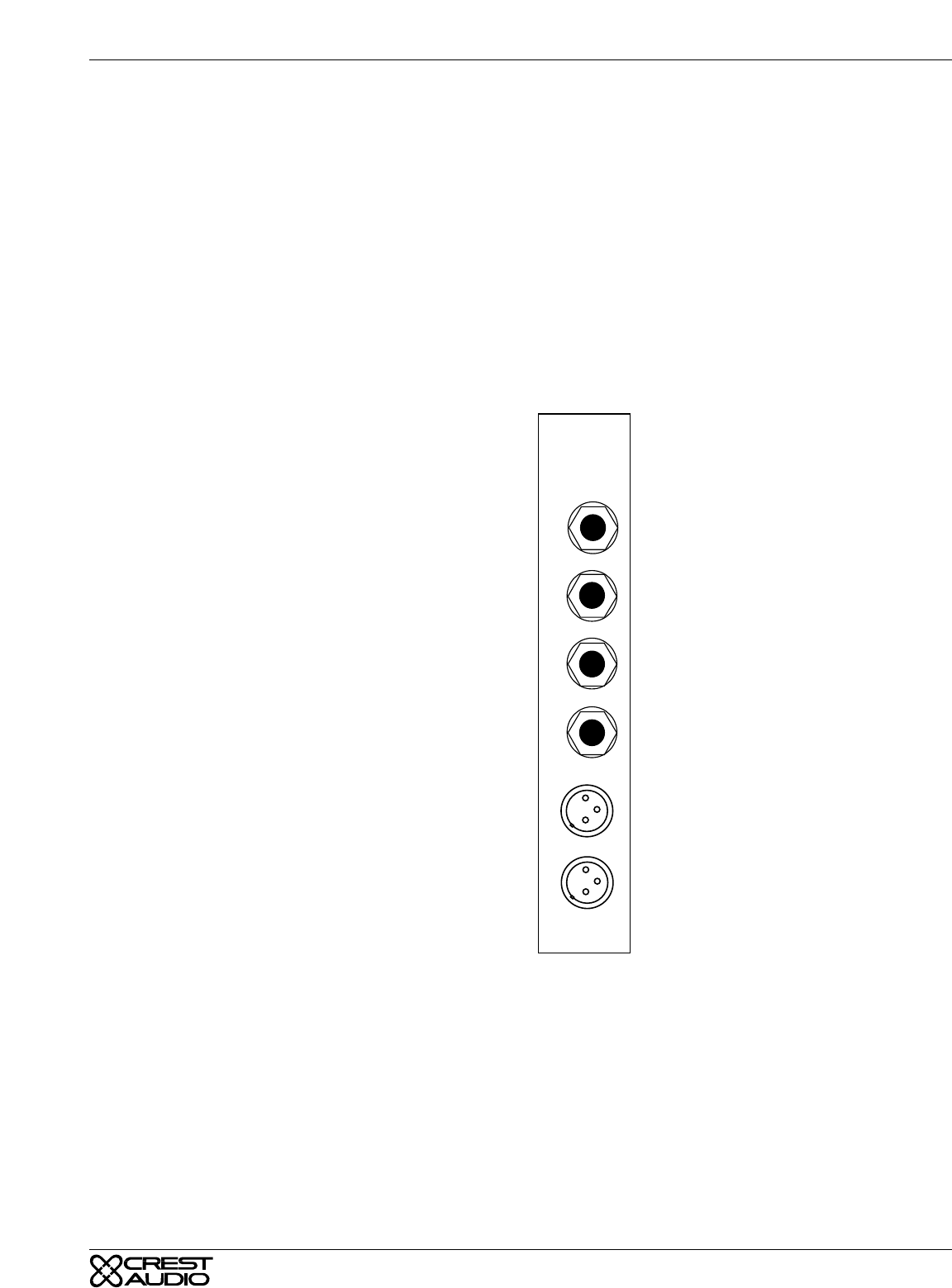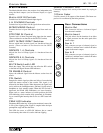
AUX 5 - 8 Individual Level Controls
Adjusts audio level of a mix for use as a monitor or an effect
send. The signal source for these mixes may be selected pre or
post fader by an associated switch.
WID(TH) Control
When used together with the BAL control, the WID control
provides a unique way to configure stereo panning. When
turned all the way counter-clockwise, this control convention-
ally assigns the left signal to the left (odd) channel assignment,
and the right signal to the right (even) channel assignment.
When adjusted to the ‘twelve o’clock’ position, left and right
signals are panned straight up the middle, effectively summing
them to mono. When this knob is turned all the way clockwise,
the left and right signals are ‘flip-flopped’, left being assigned
to the right (even) side, and the right side being assigned to the
left (odd) side.
BAL Control
Positions the entire channel image between the left (odd) and
right (even) channel assignment. Together with the WID con-
trol, this gives total control of the stereo image.
MUTE Switch with LED
Mutes the channel and all send functions. This switch does not
affect the PFL switch or the Peak and Signal Present LED indi-
cators. The LED illuminates when the channel is muted from
the local mute switch.
MONO Bus Assign Switch
Assigns the input signal directly to the Mono Clean bus.
Bus Assign Switches (L/R, 1-8)
Assigns the post Pan Signals to mix bus in odd/even pairs. Pan
controls assignment between these two mix buses with extreme
left pan assigning signal exclusively to the odd mix bus and
extreme right pan assigning signal exclusively to the even mix
bus. When the pan is in its center position, signal is fed equally
to the odd (left) and even (right) mix bus. When used in stereo
applications, the channel signal may be located anywhere with-
in the stereo image as controlled by the Pan control.
PFL Switch
Samples the channel’s signal pre-fader and allows for monitor-
ing within the master section of the console. This signal is not
affected by the Mute Switch. When depressed, the signal level
can be seen on the Left/Right meters, and heard via the mixer’s
headphone or local monitor output. When this PFL Switch is
depressed, the channel PEAK LED indicator illuminates at a
lower intensity. When used as a status indicator of switch posi-
tion, the Peak LED indicating circuit remains fully operational
by illuminating at a much higher intensity than its use as a PFL
status indicator.
PEAK/PFL LED Indicator
Illuminates RED when any of the points monitored come with-
in 3db of the clipping point. Signal is sampled after the input
preamplifier stage, after the EQ section, and after the fader.
This LED also serves as a PFL ON indicator, but at a much
lower intensity than when it is used to indicate clipping.
SIGNAL PRESENT LED
Constantly displays level activity of the input channel by vary-
ing in intensity.
100mm Fader
Used for control of all outputs of the channel except those Aux
output sections selected by switch to a pre fader position. (The
Insert output level is not affected by the fader position.)
Scene Mute Assignments
Assign the input channel to any of the four scene mute groups.
Scene mute combines with the module’s local mute button, and
actuates the local mute LED.
Scene Mute Safe Switch
Disables any selected scene mute assignments. An associated
green LED indicates the channel is in a safe state.
Rear Connections
Direct Out
This jack provides the direct output signal
(post fader & post mute) from the associated
input channel.
Insert
This jack allows for the insertion of an effect
or signal processor into the audio path of the
associated input channel.
Bal Line In
This jack accepts balanced and unbalanced
line level inputs and delivers it into the asso-
ciated input channel.
Bal Mic In
This connector accepts balanced microphone
inputs for the associated input channel.
SP / TC / GT
PAGE 15
CENTURY SERIES
BAL LINE IN L
INSERT R
BAL MIC IN L
BAL MIC IN R
BAL LINE IN R
INSERT L


















